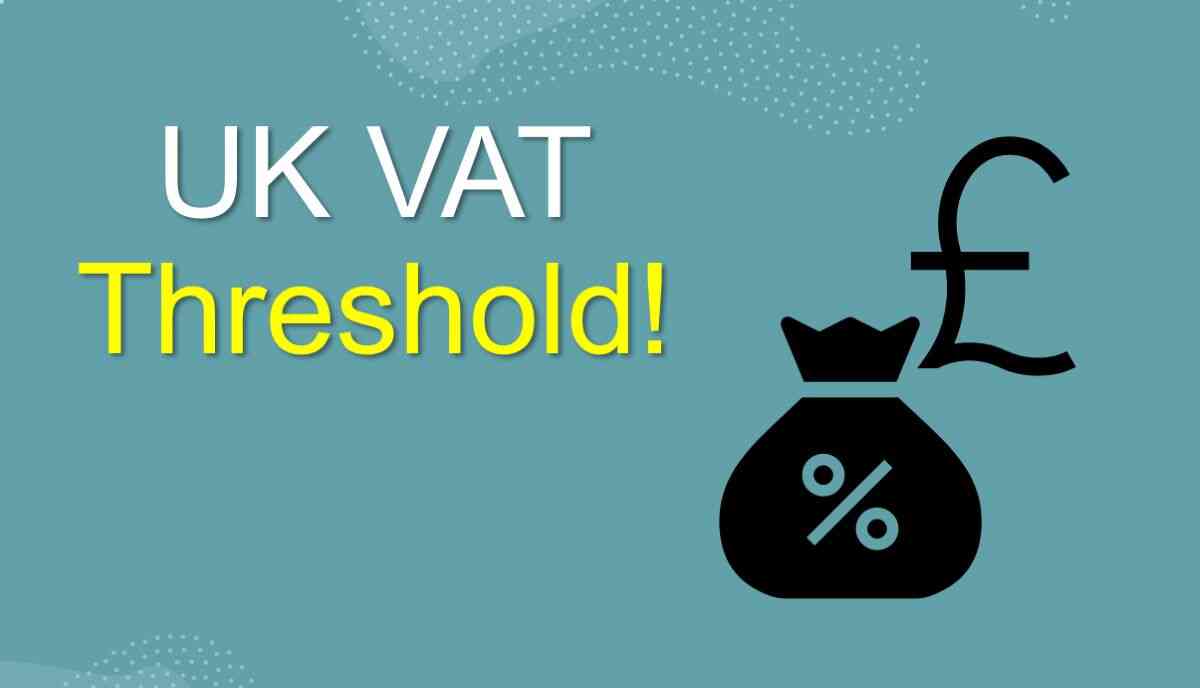The value added tax, which is commonly known as VAT, is the consumption of goods and services at each stage of production and distribution. The VAT threshold in the UK applies if your business turnover exceeds £85,000 in the last 12 months.
In the United Kingdom, businesses need to register for VAT, when their taxable turnover reaches a certain limit.
This range is known as the VAT Threshold, and businesses need to ensure compliance with the tax rules of the government. In this guide, we will break the VAT border in the UK in simple words.
What is the VAT threshold?
The VAT Threshold is the annual taxable turnover limit, on which a business should register for VAT with HM Revenue and Customs (HMRC).
The taxable turnover refers to the total sales that form a business that is not exempted from VAT. Once the taxable turnover of a business exceeds the VAT limit, it becomes mandatory for the business to register for VAT and start charging VAT on their sales.
Current VAT Threshold in the UK
According to the official data of HMRC, the standard VAT threshold in the UK is £ 85,000 (2021). This means that if a business has more than £ 85,000 turnover for the last 12 months, it will have to register for VAT.
However, you should know that it is subject to change over time, and when the threshold changes, you will be informed by HMRC authorities.
Calculation of taxable Turnover
The taxable turnover is calculated on the sale of all goods and services that are under the standard VAT rate by the authority. Also, all the sales are excluded from it which is free from VAT and any non-existent income.
To calculate your taxable turnover, add all your taxable sales value in the last 12 months.
Example:
If your business sells goods and services for which you charge VAT, and your total sales in the last year are £90,000, you will need to register for VAT, because your taxable turnover exceeds the current threshold of £85,000.
What is Voluntary VAT Registration?
When your businesses are obliged to register for VAT, and taxable turnover crosses the threshold, you can voluntarily register for VAT, even if the turnover is below the threshold. This can be beneficial for you if you want to recover input VAT on your purchase.
Example:
If your business has a taxable turnover of £60,000, which is below the mandatory threshold, you can still choose to register for VAT voluntarily. This will allow you to recover VAT on eligible business expenses.
Effect of VAT registration
Once registered for VAT, you must charge VAT on its sales, keep accurate VAT records and submit regular VAT returns to HMRC. Additionally, you can reclaim VAT on your eligible purchases.
If your businesses are VAT registered, then your business is subject to inspection by HMRC to ensure compliance with tax rules.
VAT registration dates
The effective date of registration is important, as it is calculated when the business starts paying VAT on its sales. In most cases, the effective date is the first day of the second month after the taxable turnover threshold is exceeded.
If your business’s taxable turnover exceeds £ 85,000 in March, then your effective date of VAT registration will be May 1. From this date, you have to start charging VAT on your sale.
VAT Return Dates
VAT-registered businesses are required to submit VAT returns to HMRC every quarter. The VAT return includes details of sales and purchases, the amount of VAT charged, and the amount of VAT paid on purchases.
The deadline for submitting VAT returns and paying any VAT to HMRC is one month and seven days after the end of the period of VAT return. If your VAT return period is from January to March, then the submission and payment deadline will be from May 7.
VAT Refund
You can collect VAT on your sales and your purchases. You have the opportunity to reclaim the VAT paid on eligible business expenses, known as input tax.
This may result in a VAT refund from HMRC, but keep detailed records and ensure that expenses are directly related to the taxable activities of the business.
Example:
If your business purchases goods or services for £1,000 plus £200 VAT, the total cost is £1,200. You can reclaim £200 in input tax when you lodge your VAT return.
FAQ
The VAT threshold in the UK is £85,000.
Your VAT accounting period is 12 months. Your VAT return is due once a year, 2 months after the end of your accounting period. You are now required to use software to keep digital VAT records and submit VAT returns.
The VAT rate in the UK is 20% for goods & services.
VAT-exempt goods include insurance, postage stamps and health services provided by doctors. Supplies that are ‘completely outside the scope’ of the UK VAT system.
Conclusion
The VAT threshold is important for businesses operating in the UK. If your business crosses the threshold you must register for VAT and comply with related rules and regulations. Check the VAT threshold to ensure that your business fulfils HMRC requirements. If you are uncertain about the VAT threshold then consult with a tax professional or contact HMRC. HMRC officers directly guide you in the smooth functioning of VAT rules in the UK.
